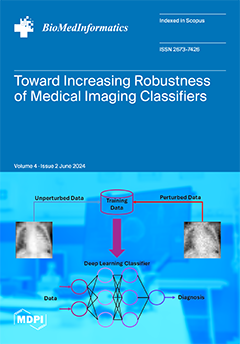Background: Diffuse large B-cell lymphoma (DLBCL) is one of the most frequent lymphomas. DLBCL is phenotypically, genetically, and clinically heterogeneous. Aim: We aim to identify new prognostic markers. Methods: We performed anomaly detection analysis, other artificial intelligence techniques, and conventional statistics using gene
[...] Read more.
Background: Diffuse large B-cell lymphoma (DLBCL) is one of the most frequent lymphomas. DLBCL is phenotypically, genetically, and clinically heterogeneous. Aim: We aim to identify new prognostic markers. Methods: We performed anomaly detection analysis, other artificial intelligence techniques, and conventional statistics using gene expression data of 414 patients from the Lymphoma/Leukemia Molecular Profiling Project (GSE10846), and immunohistochemistry in 10 reactive tonsils and 30 DLBCL cases. Results: First, an unsupervised anomaly detection analysis pinpointed outliers (anomalies) in the series, and 12 genes were identified:
DPM2,
TRAPPC1,
HYAL2,
TRIM35,
NUDT18,
TMEM219,
CHCHD10,
IGFBP7,
LAMTOR2,
ZNF688,
UBL7, and
RELB, which belonged to the apoptosis, MAPK, MTOR, and NF-kB pathways. Second, these 12 genes were used to predict overall survival using machine learning, artificial neural networks, and conventional statistics. In a multivariate Cox regression analysis, high expressions of
HYAL2 and
UBL7 were correlated with poor overall survival, whereas
TRAPPC1,
IGFBP7, and
RELB were correlated with good overall survival (
p < 0.01). As a single marker and only in RCHOP-like treated cases, the prognostic value of
RELB was confirmed using GSEA analysis and Kaplan–Meier with log-rank test and validated in the TCGA and GSE57611 datasets. Anomaly detection analysis was successfully tested in the GSE31312 and GSE117556 datasets. Using immunohistochemistry, RELB was positive in B-lymphocytes and macrophage/dendritic-like cells, and correlation with HLA DP-DR, SIRPA, CD85A (LILRB3), PD-L1, MARCO, and TOX was explored. Conclusions: Anomaly detection and other bioinformatic techniques successfully predicted the prognosis of DLBCL, and high
RELB was associated with a favorable prognosis.
Full article




